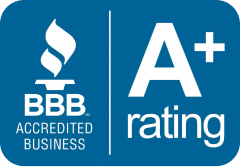Find the Best affordable
Medicare Plan



Andrew Smith
Medicare Initial Enrollment Period
Medicare Initial Enrollment Period: To get the most out of your Medicare health benefits, it’s important for you to understand how and when to enroll in Medicare. Unless you qualify for automatic enrollment, you will need to sign up for Medicare Part A and/or Part B during the Initial Enrollment Period (IEP) which begins three months before you turn 65 and lasts for seven months.
Automatic enrollment for Original Medicare
If you are turning 65 and are already receiving Social Security or Railroad Retirement Benefits (RRB) benefits, or will begin collecting retirement benefits at age 65, you will be automatically enrolled in Original Medicare, Part A, and/or Part B. When you apply for retirement benefits, you must enroll in Medicare Part B, and if you are qualified for Social Security retirement, you will automatically be enrolled in Medicare Part A. About three months before your 65th birthday, you will receive a Medicare card in the mail.
Part B has a monthly cost, however, most people are eligible for Part A for free if they have worked for at least 10 years (or 40 quarters) and paid Medicare taxes. Because Medicare Part B carries a premium, some people may choose to defer enrollment if they are currently covered by another plan, such as a group plan through their workplace.
Keep in mind that if you do not enroll in Medicare Part B when you first become eligible and later do so, you may be charged a late enrollment penalty for the life of your Medicare coverage. If you put off enrolling in Medicare Part B because you are covered by a current employer (either your own or your spouse’s), you may be eligible for a Special Enrollment Period when the group coverage ends, and you will not be charged a penalty.
If a person has been eligible for certain Social Security and Railroad Retirement Board (RRB) disability benefits for at least 24 months, Medicare enrollment is also automatic. About three months before the 25th month of disability benefits, a Medicare card is mailed out.
Beneficiaries with amyotrophic lateral sclerosis (ALS), popularly known as Lou Gehrig’s disease, will be automatically enrolled in Medicare Parts A and B the month their disability benefits begin.
You do not need to be receiving Social Security disability benefits to qualify for Medicare, and you can still work if you have the end-stage renal disease (ESRD). You can enroll in Original Medicare at any time before turning 65 if you have ESRD and need dialysis or a kidney transplant.
When to enroll in Medicare
If you do not get Social Security or Railroad Retirement Board benefits when you reach 65, you must enroll in Medicare Part A and/or Part B during your Initial Enrollment Period (IEP). This enrollment period begins three months before your 65th birthday extends through the month of your 65th birthday, and concludes three months later.
Even if you do not expect to retire at the age of 65, you can enroll in Medicare during your IEP. There is an option to apply for Medicare solely while applying for Social Security. You can choose to retire from Social Security at a later date.
You can still enroll in Medicare Part A and/or Part B during your IEP if you do not qualify for retirement benefits because you have not worked long enough. You may not be eligible for premium-free Medicare Part A, and your premium cost will vary depending on how long you worked and paid Medicare taxes. If you enroll in Medicare Part B, you will be required to pay a monthly payment.
If you miss your initial enrollment for any reason, you can enroll in Medicare Part A and/or Part B during the annual General Enrollment Period, which runs from January 1 to March 31. If you did not sign up when you were originally eligible, you may have to pay a late enrollment penalty for both Part A and Part B. During general enrollment, you can also make modifications to your coverage.
Original Medicare, Parts A, and B are available through Social Security:
- By going to www.ssa.gov.
- Monday through Friday, from 7 a.m. to 7 p.m., dial 1-800-772-1213 (TTY users dial 1-800-325-0778).
- By going to your nearest Social Security office.
If you worked for a railroad, you can enroll in Medicare Part A and/or Part B through the Railroad Retirement Board. Monday through Friday, 9 a.m. to 3:30 p.m., contact 1-877-772-5772; TTY users can call 1-312-751-4701.
When Medicare coverage begins
If you begin receiving retirement benefits before you turn 65, your Medicare coverage will begin the month you become eligible (at age 65). Your coverage will not begin until July 1 if you join up during open enrollment.
If you receive disability benefits from Social Security or the Railroad Retirement Board, the Social Security Administration or the Railroad Retirement Board determines your effective date.
If you enroll in Medicare Part A and/or Part B at your initial enrollment, the start of your coverage will be determined by the month you signed up for IEP. If you enroll during your IEP, the following chart illustrates when your Medicare coverage begins:
| If you enroll in this month of your initial enrollment period: | Then your Medicare coverage starts: |
|---|---|
| Social Security Medicare Site: http://www.socialsecurity.gov/pubs/10043.html | |
| Approximately one to three months before your 65th birthday | You’ll be 65 years old this month |
| It’s your 65th birthday month | After a month has passed since your 65th birthday |
| One month after your 65th birthday | After two months, you’ll be eligible for Medicare |
| After you turn 65, wait two or three months. | After three months, you’ll be eligible for Medicare |
Read More: 4 Best Medicare Supplement Plans to know for 2022
More to explorer

Early Medicare (How to know If you Are Eligible)
How old do you have to be to get Medicare? Early Medicare: Do you want to know when you can start receiving

Do I need to sign up for Medicare at 65 if I’m still working? (Need to Know)
Q: If I’m still working at 65, do I need to enroll in Medicare? A: Medicare eligibility begins at age 65, and enrolling early

Medicare Open Enrollment 2022 Best How to enroll Guide
Medicare Open Enrollment 2022 Guide: A multitude of techniques is available to verify the status of a Medicare application, including: Using the

